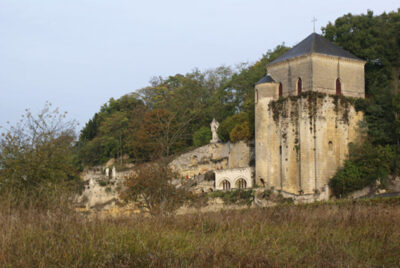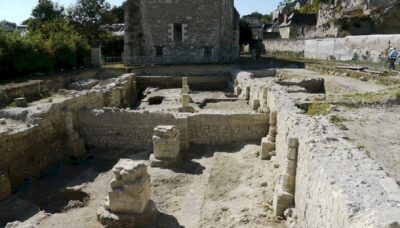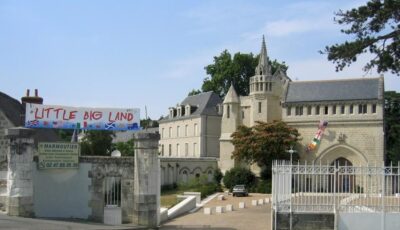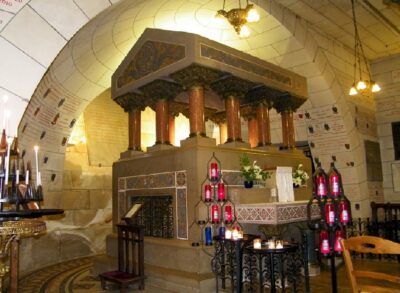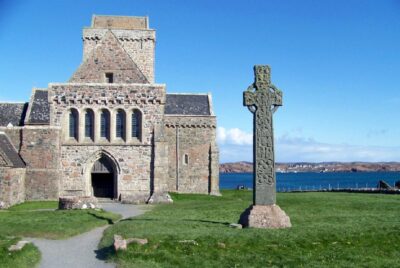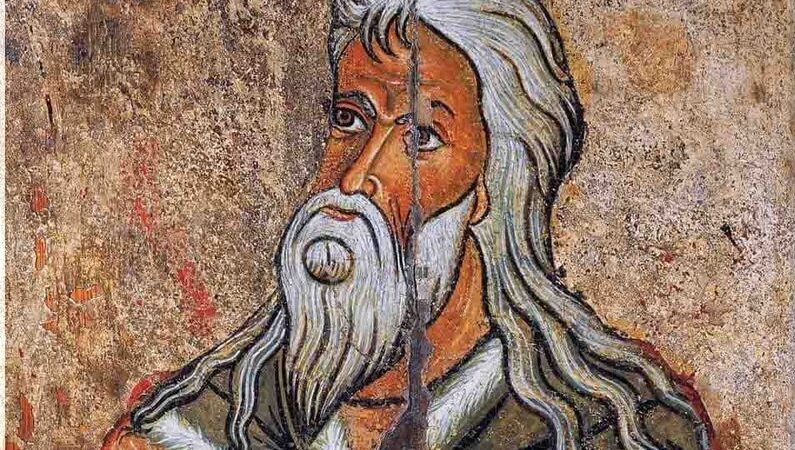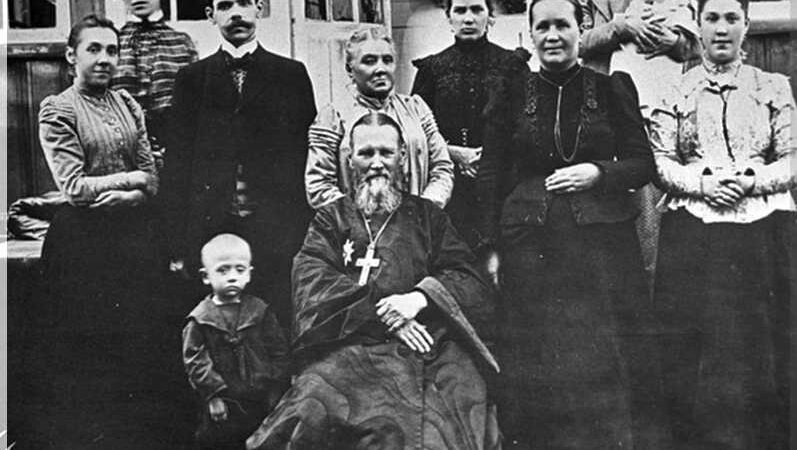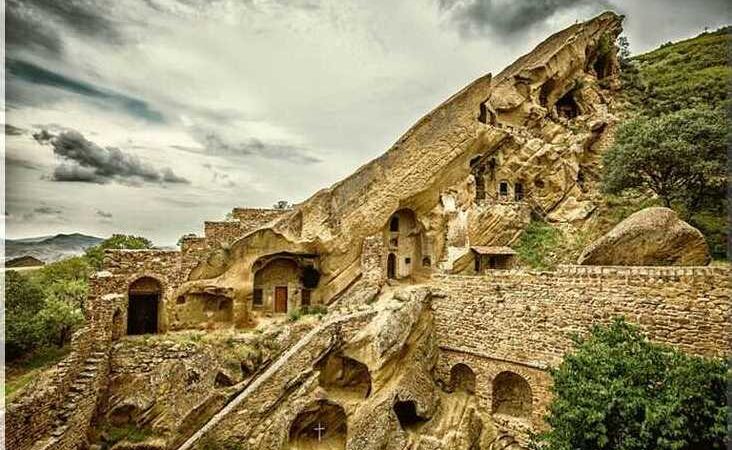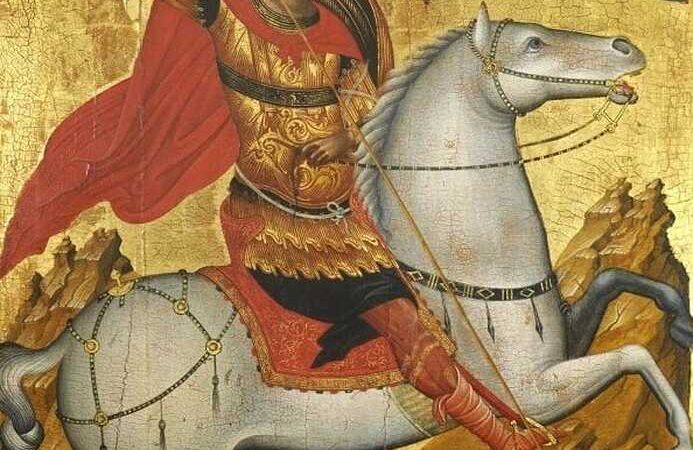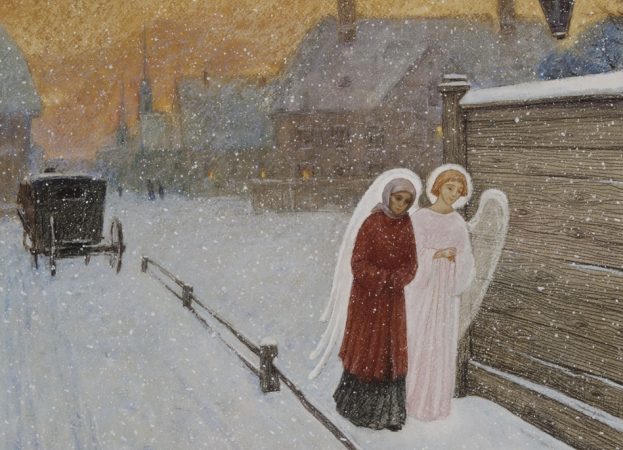St. Martin of Tours – ‘The Great Luminary of Gaul’
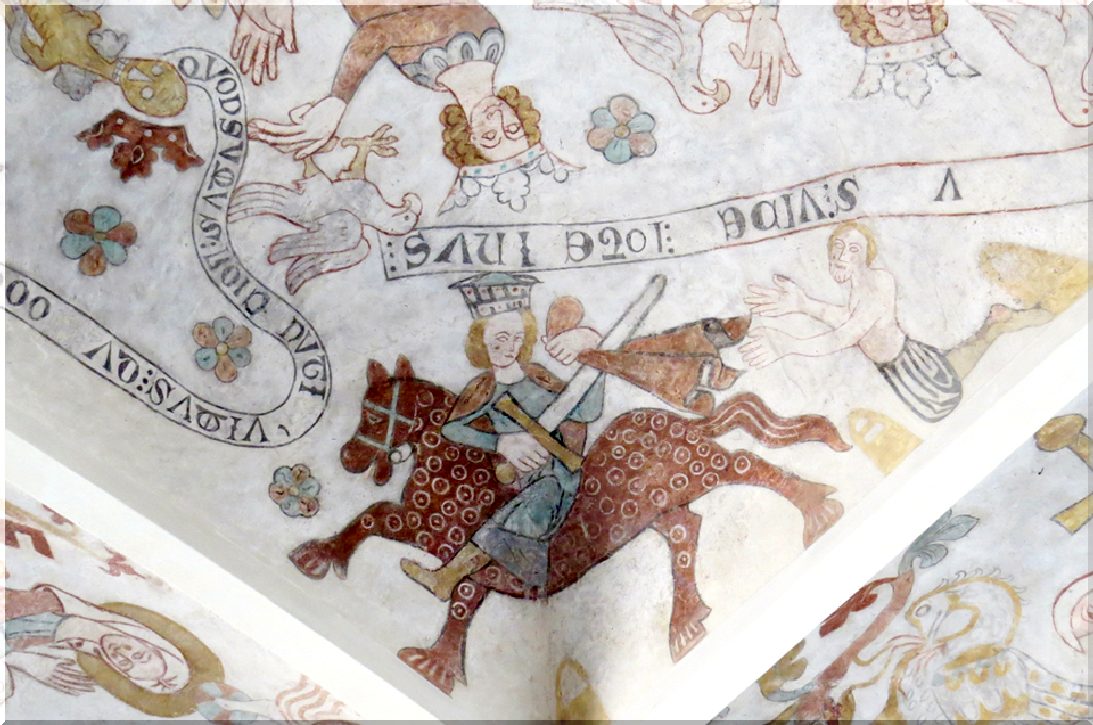
Man of All Times
Feast day: 25 October in (ROC, UOC), or 11 November (OCA)
We celebrate the memory of St Martin of Tours (316-397), according to Orthodox America ‘the first to be called Saint without having been martyred’. Alban Butler called him ‘the glory of Gaul and a light to the Western church in the fourth century’, and Thomas Owen Clancy and Gilbert Márkus call him ‘a key figure in the growth of the ascetic movement in Gaul’1(Iona: The Earliest Poetry of a Celtic Monastery [Edinburgh: Edinburgh U, 1995], p. 215).
In his wonderful article, ‘A Prologue of the Orthodox Saints of the West’, in Vita Patrum: The Life of the Fathers, by St Gregory of Tours, trans. Hieromonk Seraphim (Rose) (Platina, CA: St Herman of Alaska Brotherhood, 1988), Fr Seraphim writes:
And then, even as the news of the phenomenon of Egyptian monasticism was still spreading through the West, the West produced its own ascetic miracle: St Martin of Tours. Even before his death in 397, his manuscript Life was being circulated in Gaul, Spain, Italy, and elsewhere in the West, revealing him as a monastic Father and wonderworker in no way inferior to the desert Fathers in the East.2(pp. 18-9)
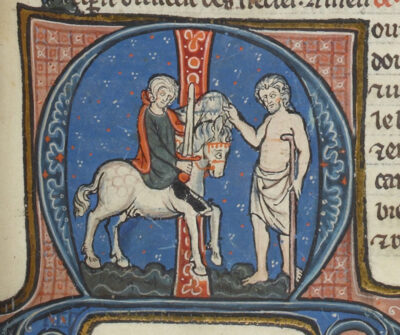
Here is the account of St Martin’s life in The Great Horologion, trans. HTM (Boston: HTM, 1997), p. 308:
Saint Martin, the great luminary of Gaul, was the son of pagan parents. When he was still quite young he became a catechumen; at the age of twenty-two he received Holy Baptism. Then he undertook the labours of a monk, and was afterwards consecrated Bishop of Tours, renowned as an ascetic and wonderworker, a faithful shepherd of Christ’s flock. He converted many both from paganism and heresy, cast out demons and raised the dead, and while undertaking all the apostolic burdens of a bishop, he never ceased to be a simple monk and man of prayer. His monastery became a center of monasticism not only for Gaul, but for all of Western Europe.
A widely celebrated incident of his life took place when he was still a catechumen, fulfilling his military service. Seeing an ill-clad beggar asking alms at the gate of the city of Amiens and being overlooked by passersby, Saint Martin, having nothing else to give, rent his military cloak in two with his sword and gave half to the beggar, so that he might cover himself in the cold.
That night, the Lord Jesus Christ appeared to him, clothed with the half of the cloak he had given to the beggar. Saint Martin’s cloak—capella in Latin—was kept in a sanctuary which came to be called capella, from which the word ‘chapel’ is derived; and they under whose care it was kept were called cappellani, from which ‘chaplain’ is derived. Saint Martin reposed in peace in the year 397.
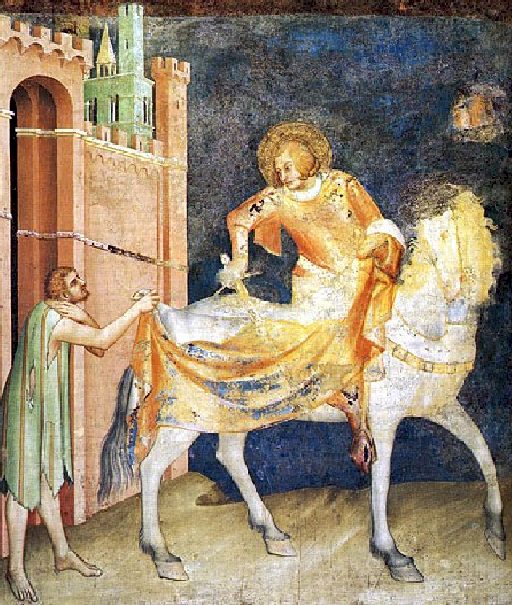
St Martin’s hagiographer, Sulpicius Severus, points out that ‘no account could ever provide a full description of his inner life, his daily behaviour and his soul which was always focused on heaven’3(Vita Martini XXVI.2; Carolinne White, trans., Early Christian Lives [London: Penguin, 1998], p. 158). But there are rich suggestions of his endeavours to follow the Apostle Paul’s injunction to ‘pray without ceasing’:
XXVI.3 . . . . Never did any hour or moment pass when he was not absorbed in prayer or concentrating on reading, although he never allowed his mind to relax from prayer, even during his periods of reading or if he happened to be doing something else. (4) Without doubt, just as in the case of blacksmiths who strike their anvil during the break in their work as a kind of relaxation from their hard work, so Martin always prayed even while he seemed to be doing something else. . . . XXVII.1 . . . There was never anything on his lips except Christ, (2) never anything in his heart except devotion, peace and forgiveness.4(White, pp. 158-9)
Thus, the infallible Adalbert de Vogüé has written that ‘the last days of Martin were an unceasing prayer’5(The Life of St Benedict, by St Gregory the Great, commentary by Adalbert de Vogüé, trans. Hilary Costello and Eoin de Bhaldraithe [Petersham, MA: St Bede’s, 1993], p. 179), and St Gregory of Tours writes in his Historiae Francorum I.486(The History of the Franks, trans. Lewis Thorpe [Harmondsworth, UK: Penguin, 1985], p. 97):
In the second year of the rule of Arcadius and Honorius, Saint Martin, Bishop of Tours, who had done so many good deeds for the sick, who was so holy and had performed so many miracles, died at Candes, a village in his own diocese, in the eighty-first year of his age and the twenty-sixth year of his episcopate, and so went happily to meet Christ. He died at midnight on a Sunday, during the consulship of Atticus and Caesarius. As he passed away, many heard a chanting of psalms in the sky, which I have described at greater length in the first books of his Miracles7[indeed, Fr Seraphim notes, ‘Being especially under the influence of St Martin, his own predecessor in the See of Tours, from whom he received miraculous healings, he devoted four of the eight books of this work to The Miracles (or rather, Virtues) of Blessed Martin the Bishop’, p. 25].
In his wonderful Gifford Lectures at Edinburgh (1948-1949), published as Religion and the Rise of Western Culture8(Garden City, NY: Image, 1958), Christopher Dawson has insightfully observed:
In the Dark Ages the saints were not merely patterns of moral perfection, whose prayers were invoked by the Church. They were supernatural powers who inhabited their sanctuaries and continued to watch over the welfare of their land and their people. Such were St Julian of Brioude, St Caesarius of Arles, St Germanus of Auxerre – such, above all, was St Martin, whose shrine at Tours was a fountain of grace and miraculous healing, to which the sick resorted from all parts of Gaul; an asylum where all the oppressed he fugitive slave, the escaped criminal and even those on whom the vengeance of the king had fallen – ould find refuge and supernatural protection9(p. 33).
Unfortunately, St Martin’s shrine, which was once ‘perhaps the most striking monument of Christian Gaul, being, outside of Rome, the chief center of Christian pilgrimage in the West’10(Fr Seraphim, p. 63), was destroyed.
First burned by the Protestant Huguenots in 1562, then, in 1793, ‘in the midst of the most ferocious anti-Christian revolution’ before the 20th c., ‘leveled to the ground . . . in a deliberate attempt to blot out the memory of the saints’.
Thanks to God, ‘in a commendable spirit of repentance for the revolutionary sacrilege . . . some devout Roman Catholics’ located the sepulcher and some fragments of St Martin’s relics, and the cathedral was rebuilt (Watch Marmoutier Abbey 360o tour here! 🛫 ).
But of course, St Martin’s veneration had spread elsewhere over the centuries.
Fr. Mark at Vultus Christi tells us that St. Benedict dedicated a chapel to St Martin at Monte Cassino. According to the Venerable Bede’s Ecclesiastical History I.26, an old British Church of St Martin was among the earliest used by Anglo-Saxon Christians11(The Ecclesiastical History of the English People, trans. Bertram Colgrave, ed. Judith McClure and Roger Collins [Oxford: Oxford U, 1994], p. 41; a later, London Church, St Martin-in-the-fields, serves as the home of the wonderful ensemble, the Academy of St Martin-in-the-fields).
St Martin’s mercy to the beggar seems to have made him a patron Saint of the hospitality industry, and one can thus find a depiction of this incident behind the counter at many Mexican restaurants. He is also the patron Saint of the US Army Quartermaster Corps, which awards an ‘Order of St Martin’ medallion.
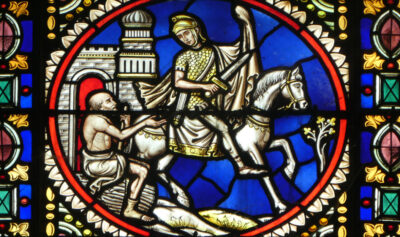
Speaking of the celebration of St Martin’s feast in his monastery, the endearing Brother Victor-Antoine d’Avila-Latourrette writes, ‘It is an intimate monastic feast, for St Martin, especially in France, is very much loved by monks and nuns’(A Monastic Year: Reflections from a Monastery [Dallas: Taylor, 1996], p. 161).
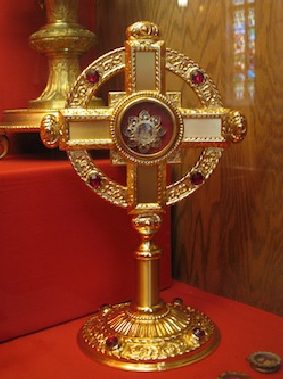
According to the Fish-Eaters site (here):
St Martin’s Feast is considered the first day of Winter for practical purposes, so, alluding to the snows of that season, the Germans say that ‘St Martin comes riding on a white horse’. Of course, it might not feel like Winter if one is experiencing a ‘St Martin’s Summer’ – the equivalent of an ‘Indian Summer’. It is said, too, that one can predict what sort of Winter one will have by the conditions of St Martin’s Day: ‘If the geese at Martin’s Day stand on ice, they will walk in mud at Christmas.’
Because of this, St Martin’s Feast is much like the American Thanksgiving (celebrated on the 4th Thursday in November) – a celebration of the earth’s bounty. Because it also comes before the penitential season of Advent, it is seen as a mini ‘carnivale’ with all the feasting and bonfires. As at Michaelmas on 29 September, goose is eaten in most places (the goose is a symbol for St Martin himself. It is said that as he was hiding from the people who wanted to make him Bishop, a honking goose gave away his hiding spot), but unlike most Catholics, those of Britain and Ireland prefer pork or beef on this day.
Also, children might also enjoy “Martin’s Horns” – known in Germany as Martinshörnchen:
Martinshörnchen
500g flour
30g yeast
80g sugar
80g butter, softened
1 egg
250g milk
Pinch of salt
50g vanilla sugar
300g almond paste
200g powdered sugar
Put the flour in a mixing bowl and make a well. Put the yeast in the well and pour onto 5 TBSP milk and a TBSP sugar. Mix lightly with a fork, then let it rest for 15 minutes.
Add the sugar, egg, butter, and salt and knead until a soft dough is formed that comes away from the sides of the bowl. Cover with a damp tea towel and let it rest for another 15 minutes.
Rolll it out into a rectangle and cut it into 12 triangles. Take a piece of the almond paste that’s about the size of a walnut and place on each triangle. Fold the triangles, rolling from the long end toward the tip and form into a crescent shape. Preheat oven to 350F. Place the crescents on a parchment-lined tray and let rest for another 15 minutes while the oven is heating. Then bake the crescents for 15-20 minutes until golden and crispy. Mix a teaspoon or so of water into the powdered sugar and brush onto the rolls. Let dry.
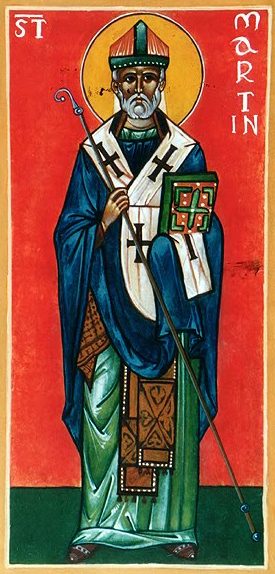
A good way to get into the spirit, for Orthodox or for Catholics who wish to return to their roots, would be to read Sulpicius’s Vita of the Saint. In conclusion, here are the Troparion and Kontakion for St Martin, from the Horologion12(p. 309):
Dismissal Hymn of Saint Martin. Fourth Tone
Be quick to anticipate
In signs and in miracles thou wast renowned throughout Gaul; * by grace and adoption now thou art a light for the world, O Martin, most blest of God. * Almsdeeds and compassion filled thy life with their splendour; * teaching and wise counsel were thy riches and treasures, * which thou dost dispense freely unto all them that honour thee.
Kontakion of Saint Martin. Plagal of Fourth Tone
As first-fruits of our nature
As a devoted man of God, thou didst proclaim His mysteries. * And as a seer of the Trinity, thou didst shed thy blessings on the Occident. * By thy prayers and entreaties, * O adornment of Tours and glory of all the Church, * preserve us, O Saint Martin, and save all who praise thy memory.
(by A. Taylor)

